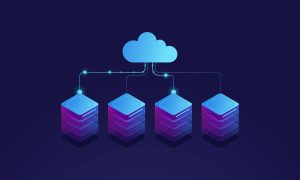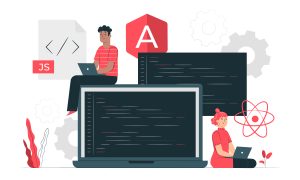Businesses today use sophisticated analytics to keep up with trends and remain competitive in an increasingly complex market. Numerous software packages used by businesses facilitate the capture of basic data such as invoicing, stock levels, prices, procurement data, customer and sales information, and more. The number of transactions taking place on any one day in a medium- to large-sized company means that the company database grows and grows until it reaches huge proportions.
For businesses to survive, they need to store their data and evaluate it regularly to make sure that they are on the right trajectory. It starts as a simple process: how many sales did we make last year? Have we increased our sales this year? Did our prices increase? How many sales have we made so far this month?
It becomes more complicated as the database increases in size and complexity. For example, a business might have to change and adjust its methods of calculating sales performance using different analysis criteria when it introduces a new product line.
Most businesses now use sophisticated tools to get simple answers because there is so much data, and they cannot afford to wait hours for the reporting process to complete. Businesses today need fast, accurate information that enables them to make informed decisions quickly.
Business analytics is the process of extracting and analyzing data with the purpose of allowing management to make informed decisions around the financial, operational, and sales aspects of businesses. Companies employ business analysts who have technical knowledge of data structures and can make use of various tools that can interrogate data and produce reports.
Some companies utilize data from other sources, such as social media, to get to know their customers and product niches, predict product sales, glean information on marketing strategies, and investigate new products.
For businesses to remain competitive and successful, they need to employ experts in the field of business analytics and make use of some of the vast array of available analytical tools. Without these tools, analysis of large amounts of company data could take weeks to complete, rendering the information obsolete before it has even reached management. Businesses use systems such as enterprise resource planning (ERP), customer relationship management (CRM), and supply chain management (SCM) to record and store their transactional data. This data is then gathered (or mined) and interrogated by a suite of sophisticated business analytic tools to produce statistics, reports, and predictions.
If you hold a bachelor’s degree in data science or another related discipline, you might consider an Online Business Analytics Master’s degree at St. Bonaventure University. As a Master of Science graduate from SBU, you will be well prepared for high-demand roles in the exciting world of data analytics, with your valuable technical skills gained through hands-on experience with powerful data analysis software.
Business Analytics Tools

As databases grow in size, the need for robust technology with which to mine and analyze the data also expands. The range of business analytics tools continues to grow, with each application offering unique and sophisticated features with which to analyze data, predict future trends, identify problem areas, make decisions, and improve productivity.
These tools are intuitive and fast, enabling business leaders to proactively manage their operations, often avoiding unsatisfactory outcomes before they happen. The tools offer features such as high-grade text analytics that enable the transformation of unorganized text data into something meaningful and suitable for further analysis. Some tools offer real-time analysis of company data, enabling speedy action and decision-making.
Most business analytics tools feature robust data analysis features, converting unstructured data into a format that can be interrogated at lightning speed and presenting the results in a user-friendly array of reports, graphs, and diagrams.
Many of the analytical tools offer dashboard features for enhanced visualization, and perhaps a drag-and-drop option such as the one provided by the Dundas BI tool, allowing the user to create their own reports from the dashboard. Applications such as Qlik View feature their reports in different colors, separating related and non-related data for ease of use, with a unique in-memory processing feature that enables rapid reporting.
Accurate data analysis is key to effective business decision-making, and tools such as Sisense and Microstrategy offer extensive data evaluation capabilities to facilitate accurate forecasting and decision-making. Other tools support automated analysis features that run for specified time periods and include statistical analysis capabilities and the ability to analyze unstructured text data. Many businesses make use of specific tools that analyze data produced by social media sites, performing in-depth analysis of patterns in the data, and predicting future trends in sales, marketing, and product analysis.
Open source
Popular open-source analytics tools include program languages such as R and Python. Python is a high-level language with dynamic semantics and easy-to-use syntax, while R is used for analysis and statistics.
The Apache suite of tools, such as Spark and Storm, are open-source offerings that are easy to use, flexible, and developer-friendly.
The Role of AI in Business Analytics
Artificial intelligence (AI) is machine intelligence, as opposed to human or animal intelligence. Artificial intelligence refers to the ability of machines to learn, interrogate, analyze, predict, and propose. AI has been around for a long time but has been expensive to use, and AI projects were often unsuccessful. However, with the rapid changes in technology in recent years, AI has seen a rise in its use and its practicality and is set to make huge changes in all areas of business.
Business applications, by necessity, are becoming increasingly sophisticated and more reliant on AI. The large volumes of data and complexity of business models and operations necessitate fast, accurate processing if businesses are to remain competitive. It usually depends on the size of the business as to the level of sophistication of their analytics. As technology progresses, however, even smaller businesses can afford some form of AI analytical tool.
AI Analytics
AI analytics are based on machine learning (ML) algorithms that can learn different patterns of behavior accurately and quickly. ML algorithms identify relationships and anomalies in data, organizing the data into specific sets, depending on the purpose of the exercise, and all of this happens in a few split seconds—a lot quicker than previous manual processes.
The accuracy of machine learning (ML) depends on how the algorithms have been designed, and this is crucial to the accuracy of AI analytics. As a company’s data becomes more complex, machine learning needs to identify different patterns simultaneously, requiring sets of algorithms, with unique tasks in the analysis process.
An advantage of AI is that it is not biased towards particular business processes – the analysis provided by AI is based solely upon facts.
How AI is used in Business?
AI enables businesses to analyze historical and current data so that they may learn from the past, proactively monitor their current situation, and predict future trends and figures. It depends on the type of business and their goals as to what analytical techniques they should use. It also depends on the amount of data available and its accessibility.
One of the better-known data analysis models is Gartner’s analytics ascendancy model, which describes four steps of analysis, with the fourth model being an advanced option for the more ‘mature’ company in terms of data analysis. We discuss the four levels of analytics as defined by Gartner:
Descriptive analytics uses historical data to identify past events, for example, sales figures dropping in a certain period, inventory levels being low, or machine hours being lost in the manufacturing process.
Diagnostic analytics interrogates the data to find reasons for these events: why did the sales figures drop? Was it seasonal or perhaps political unrest? Did inventory levels drop because the supplier failed to deliver, or because the procurement process was inefficient? Did the machine hours drop due to malfunctioning equipment or a labor shortage?
Predictive analytics use previous data to predict future scenarios, such as sales forecasts and budgetary requirements. AI can assess the condition of machinery and determine when it needs to be serviced or replaced, enabling companies to plan ahead and budget for such events.
Prescriptive analytics requires sophisticated algorithms to prescribe what actions and decisions can be taken by companies to improve their performance.
In e-commerce situations, businesses can monitor their customer satisfaction levels and their product performance through the use of AI and internet-based applications.
Deep learning
Inspired by the neural workings of the brain, deep learning is a revolutionary new form of AI learning, currently making inroads into analytics in the financial sector. Unlike ML, deep learning makes use of layers of processing, producing higher levels of information.
Deep learning algorithms used in financial companies serve to enhance investment strategies based on real-time marketing trends and historical data. In addition, the identification of anomalies in large chunks of data leads to the early detection of fraud, preventing substantial financial losses. Risk assessment is also becoming more accurate and thorough due to the large amounts of data available for analysis and based on historical data, market trends, and other external factors. Compliance with regulatory requirements has become easier to manage, reducing both errors and risks in the financial environment.
Will the role of the data analyst become redundant?
Nothing is completely predictable; however, even with AI, large companies still need people with an understanding of data and the complex needs of a business. AI works some of the time, but it still presents errors and human interaction will be required in some form for the foreseeable future. No company is the same, and while smaller companies are likely to get by on simpler data analysis tools, large corporations have unique needs and will require the expertise of data analysts and scientists for some time to come.
Ethics and AI
Along with improved efficiency and accuracy, AI brings with it some ethical concerns in the forms of privacy and surveillance, discrimination and bias, and human judgment.
There’s no need to panic. This is a conversation that each company needs to have. Perhaps consider setting up a committee to discuss and mitigate the risks involved when introducing AI into your company. AI is rapidly evolving and the legal implications regarding technology are still a bit of a gray area and as a result, it’s not easy to maintain 100% compliance with regulations. A concerted effort to record your processes and comply with any regulations you are aware of, however, should reduce the risk and the likelihood of legal procedures down the line. Provided, of course, that the relevant committee meets regularly to evaluate AI developments within the organization.
Summary
The most important thing for aspiring analysts to remember is that accuracy is critical. Companies have been known to fold based on inaccurate reporting. Effective methods of capturing and storing data, accuracy in the machine learning algorithms, and accuracy in the analytical and reporting phases are key to the survival of a business. Decisions cannot be made on data that has been erroneously captured, or on incomplete data. Databases need to be sound and the data reliable for the analysis process to be successful.
AI, machine learning, and deep learning are still in the early stages of development, but it’s an exciting environment to be working in. There’s a learning curve ahead, but a job in data science holds a fascinating future for those with an aptitude for technology.





































































